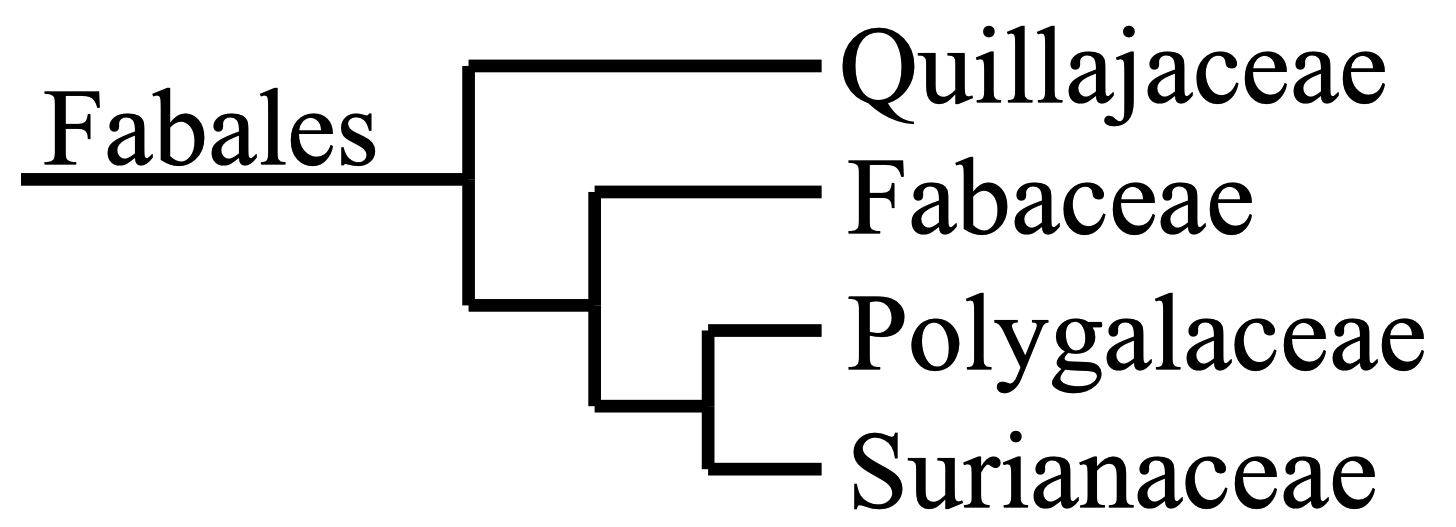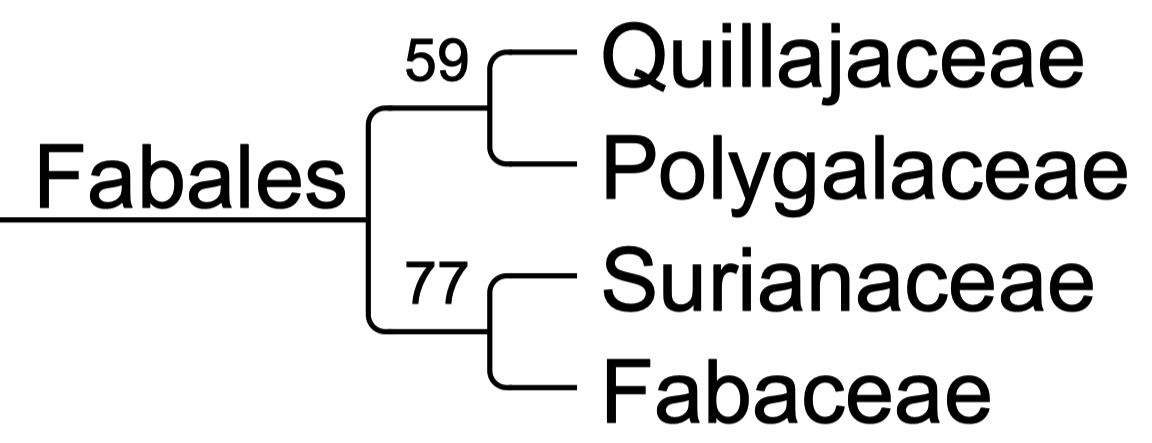2 min to read
33豆目Fabales
【拉】faba豆原名
4科778属20411种
APW:

PPA & PPA II:

- ⁉️Fabales的界定都让人觉得好奇怪。。
- ⚠️4个科的科间关系特别混乱!!
- Within Fabales, Persson (2001) suggested the relationships [Polygalaceae [Surianaceae [Quillajaceae + Fabaceae]]], but with little support (this tree was used in versions 1-6 of this site), although elements of it have also been obtained by Cannon et al. (2014: Surianaceae not sampled) and Z.-D. Chen et al. (2016: Quillajaceae not sampled).
- Forest et al. (2002, see also Qiu et al. 2010) found weak support for the topology [Q [F [S + P]]],
- and Banks et al. (2008) also found strong support for the relationship [Q [the rest]].
- However, Wojciechowski et al. (2004: ?sampling) suggested the possibility of a [S + Q] grouping.
- The unrooted topology in Bruneau et al. (2008a) is [P [Q + S] F].
- Bello et al. (2009) in a careful analysis of matK and rbcL data, preferred the relationships [P [F [S + Q]]] obtained in a maximum parsimony analysis, however, support was poor, and if anything was still poorer for any relationships obtained in Bayesian analyses of the same data (see also M. Sun et al. 2016).
- Wang et al. (2009) did not obtain well supported relationships in Fabales in their twelve-gene analysis of the rosids,
- while in a megaphylogeny of angiosperms S. A. Smith et al. (2011) found some support for a clade [Q + F].
- Relationships remained unclear in the study by Soltis et al. (2011).
- Bello returned to the problem and included morphological data with a two-gene data set. In various analyses [S + Q] were usually at least moderately supported, but support for Fabaceae and Polygalaceae as being successively sister to that pair was weak (Bello et al. 2012); the topology recovered by Bello et al. was also preferred by Cardoso et al. (2013b) and Koenen et al. (2013), although they focussed on Fabaceae.
- Cardoso et al. (2013b) also placed Vauquelina (Rosaceae!) in this area as part of a tritomy. That genus has indeed been associated with Quillaja in the past, but some time ago in an ITS phylogeny it grouped with Rhaphiolepis and Eriobotrya within Rosaceae-Amgydaloideae (Campbell et al. 1995), and it is to stay in Rosaceae.
- H.-L. Li et al. (2015, 2016) obtained the groupings [[S + Q] [P + F]], although support for the latter family pair was not good,
- and H.-T. Li et al. (2019) in their chloroplast analyses recovered a [[F + S] [P + Q]] grouping, but with little support.
- L. Zhao (2016: Surianaceae not included) found the relationships [Q [P + F]]. The bottom line: The topology of the tree used here may be wrong.

Comments